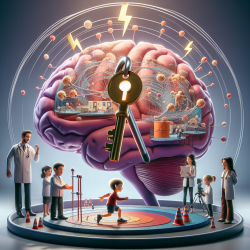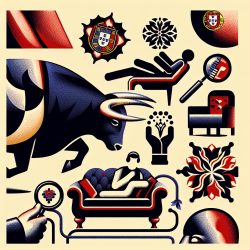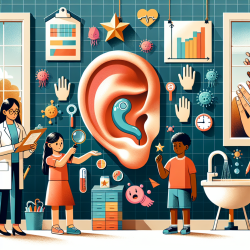Introduction
In the ever-evolving field of speech-language pathology and pediatric therapy, understanding the intricate workings of the brain is crucial. The recent study titled "Distinct dual cortico-cortical networks successfully identified between supplemental and primary motor areas during intracranial EEG for drug-resistant frontal lobe epilepsy" offers groundbreaking insights that could transform therapeutic approaches for children with neurological disorders.
The Study in Focus
This research, published in Epilepsy & Behavior Reports, investigates the complex networks within the brain's motor areas, particularly in cases of drug-resistant frontal lobe epilepsy. The study focuses on a 12-year-old girl with two distinct types of seizures originating from separate networks within the supplementary motor area (SMA) and primary motor area (PMA).
Key Findings
- Dual Networks: The study identified separate cortico-cortical networks within the SMA and PMA, which are responsible for different types of seizures.
- High-Frequency Oscillations (HFO): Ictal HFOs were used to pinpoint the exact onset and spread of seizures, offering a precise map of epileptic activity.
- Cortico-cortical Evoked Potentials (CCEP): This technique demonstrated the reciprocal connections between the SMA and PMA, providing insights into the functional connectivity of these areas.
- Seizure-Free Outcome: The surgical intervention based on these findings led to a seizure-free outcome for the patient, highlighting the potential of tailored surgical approaches.
Implications for Pediatric Therapy
For practitioners working with children, these findings offer a new perspective on managing drug-resistant epilepsy and other motor-related disorders. By understanding the distinct networks within the brain, therapists can develop more targeted interventions that address the specific needs of each child.
Encouraging Further Research
This study opens the door to further research into the brain's cortico-cortical networks. By exploring these connections, we can improve our understanding of neurological disorders and develop more effective therapies. Practitioners are encouraged to delve deeper into this area of research to enhance their skills and improve outcomes for their patients.
Conclusion
The identification of distinct dual cortico-cortical networks in the brain is a significant advancement in the field of neurology and therapy. By applying these findings, practitioners can offer more personalized and effective treatments for children with complex neurological conditions.
To read the original research paper, please follow this link: Distinct dual cortico-cortical networks successfully identified between supplemental and primary motor areas during intracranial EEG for drug-resistant frontal lobe epilepsy.










